Explore this Article
IN THIS ARTICLE
Other Sections
X
wikiHow is a “wiki,” similar to Wikipedia, which means that many of our articles are co-written by multiple authors. To create this article, 15 people, some anonymous, worked to edit and improve it over time.
There are 8 references cited in this article, which can be found at the bottom of the page.
This article has been viewed 114,101 times.
Learn more...
Whether you are simply curious or have been advised by a doctor, you can use a stethoscope to listen to your own heartbeat and measure your pulse. This article will walk you through how to use a stethoscope on yourself, how to count your heartbeats, and how to turn your measurement into a BPM calculation. Read on for more info!
Steps
1
Purchase a stethoscope if you do not already have one.
2
Find a way to keep time.
3
Take off unnecessary layers.
-
To take your pulse, you will be listening to your heart through your chest. Depending on the quality of your stethoscope you can usually listen through about two T-shirt layers of clothing (just for the beats, not quality). Take any extra heavy clothing off if you cannot hear your heart clearly.
Advertisement
4
Place the earpieces in your ears.
-
Be sure not to put them in backwards. The earpieces of the stethoscope are usually angled and in order to hear correctly and have them be comfortable you need to place the tips in facing FORWARD, in the direction that you are looking. If they are not comfortable, you may gently bend them forward or backwards to get a good fit.[1] X Research source
5
Check to see if you can hear a sound.
-
The piece that goes on your chest is called the chestpiece. Many stethoscopes have chestpieces with two sides that can be rotated around the tubing to better hear high frequency and low frequency lung sounds, a diaphragm and a bell. When one is in use the other cannot be used. With the earpieces in your ears, GENTLY rub the diaphragm side (the one with the flat plastic piece) of the stethoscope and listen for a sound. If you do not hear a sound, turn the chest piece over (you should hear it click into position) and try again. This should resolve any issues.[2] X Research source
Advertisement
6
Position the chestpiece correctly.
-
Position the chestpiece on your chest, find the imaginary line between your nipples. You want to put the chestpiece diaphragm side down on that line slightly to your left of center. Experiment to find where you can hear your heart best. If you are having trouble and still cannot find it, it may be helpful to lie down or lean forward slightly while doing this.[3] X Research source
7
Get your timepiece ready to watch.
-
You are now ready to count your heart beat for a given time period. When you listen to the heart, remember that it has TWO beats, which represent the succession of valves in your heart contracting to pump blood (lub-dub lub-dub). HOWEVER ONLY ONE OF THOSE BEATS IS COUNTED IN YOUR PULSE. The first beat is usually stronger and it is recommended only listening to that beat and tuning the first one out.[4] X Research source
Advertisement
8
Start counting.
-
Look at the second hand on your watch/clock, and when the second hand hits one of the 5 minute markers start counting the beats through your scope. In a clinical setting they typically count the pulse for 30 SECONDS as this is the minimum that is considered accurate. As mentioned earlier, you do not need to note each time the second hand moves, keeping track of that is too much work! Instead, look at where the second hand WILL end up at the end of 30 seconds.
- For example, if you start counting at the "2" mark, the hand will have passed 30 seconds at the "8" marker, or if you start at 12, 30 sec. will be at 6. Stop counting beats when the second hand reaches the marker and 30 seconds have elapsed. If you would like to be even more accurate (because the pulse is not always completely regular), you may count beats for 1 minute.[5] X Research source
9
Calculate BPM.
-
If you counted for an entire minute you are all set and have your pulse. However, in most cases you now need to do a little math because pulse values are expressed in beats per minute (BPM). You counted the beats for 30 seconds, but as there are 60 seconds per minute you must multiply that by 2 to get beats per 60 seconds.
- For example, if you counted your pulse at 36 beats over 30 seconds, your pulse would be 72 because 36beats/30seconds = 72beats/60seconds. If, for some reason, you counted beats for only 15 seconds (as is sometimes done in moving ambulances because taking pulses is a PAIN in there), you would need to multiply by 4 as 15 x 4 = 60 = bpm.[6] X Research source
Advertisement
10
Repeat if required.
-
Pulse does fluctuate relatively regularly, but repeat if you think your pulse was unusually high or low. For example, if your measured pulse is 15-20 bpm off your normal, you should definitely repeat this process to make sure you were accurate, and repeat successively until your measurements are relatively similar. And that's all there is to it.
Warnings
- Be careful not to bump anything with the chestpiece of the stethoscope while it is in you ears, the sound will carry and this is loud and unpleasant!⧼thumbs_response⧽
- If you do happen to hear anything other than the standard "lub-dub" sounds when you are listening to your heart, it may be beneficial to talk to your doctor about them, especially if you are feeling unusually sick. This would include anything you hear between "lub" and "dubs" or anything particularly high-pitched. Listen to recordings of normal heart sounds online to get an idea what your heart should sound like (although note that there is variation).⧼thumbs_response⧽
Advertisement
You Might Also Like

How to
Check Your Blood Pressure with a Sphygmomanometer
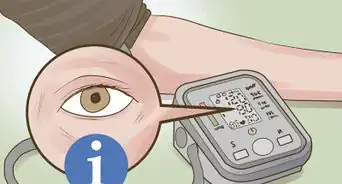
How to
Check Your Pulse

How to
Calculate Your Target Heart Rate
 Medically Approved Ways to Lower Your Heart Rate Fast
Medically Approved Ways to Lower Your Heart Rate Fast
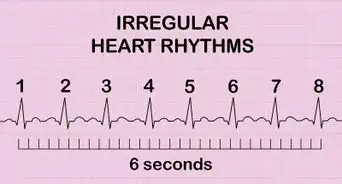
How to
Calculate Heart Rate from ECG

How to
Make an Electromagnetic Pulse
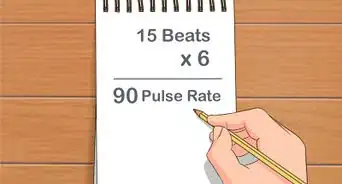
How to
Find Your Brachial Pulse

How to
Lower Your Heart Rate Naturally

How to
Monitor Your Heart Rate

How to
Find Your Resting Heart Rate

How to
Take an Infant's Pulse

How to
Find the Popliteal Pulse
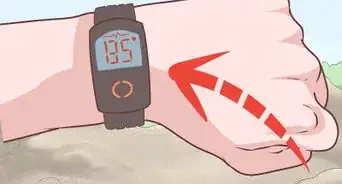
How to
Calculate Your Heart Rate

How to
Document Pulses
Advertisement
References
- ↑ https://www.adctoday.com/blog/intro-your-stethoscope
- ↑ http://www.madehow.com/Volume-1/Stethoscope.html
- ↑ https://www.registerednursern.com/apical-pulse-assessment-and-location/
- ↑ https://wwwn.cdc.gov/nchs/data/nhanes3/manuals/pressure.pdf
- ↑ https://www.rcm.org.uk/news-views-and-analysis/analysis/auscultation-the-art-of-listening
- ↑ https://www.scientificamerican.com/article/bring-science-home-stethoscope/
- ↑ https://www.nhs.uk/common-health-questions/accidents-first-aid-and-treatments/how-do-i-check-my-pulse/
- ↑ https://www.medicine.mcgill.ca/physio/vlab/cardio/auscul.htm
About This Article
Advertisement

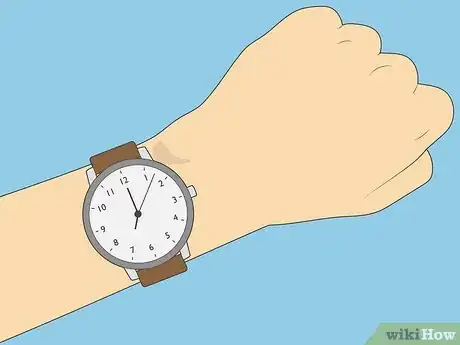

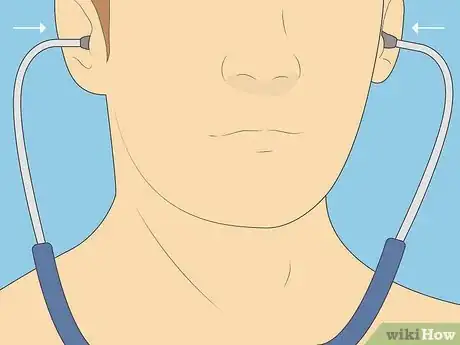













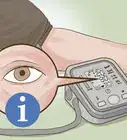





































Medical Disclaimer
The content of this article is not intended to be a substitute for professional medical advice, examination, diagnosis, or treatment. You should always contact your doctor or other qualified healthcare professional before starting, changing, or stopping any kind of health treatment.
Read More...